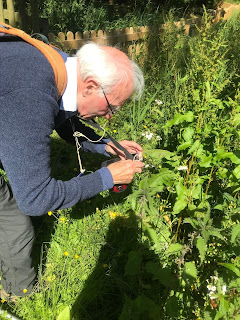 Andrew Branson, editor of BSBI News, has emailed to say that the latest issue of our newsletter is being mailed out to members this week, and he's dropped a few hints about what we can look forward to in this issue.
Andrew Branson, editor of BSBI News, has emailed to say that the latest issue of our newsletter is being mailed out to members this week, and he's dropped a few hints about what we can look forward to in this issue.The lead article is by Kevin Walker & Pete Stroh (aka the BSBI Science Team) and Robert Northridge - it's about life after Atlas 2020 - what do members want to do next? A reminder here that if you haven't yet filled in Robert's questionnaire on this very subject, please do so asap by heading over to the password-protected members' area where you can download a copy.
Then there's an article by Clive Stace called 'Changing names: can we or the books keep up?' It includes news about the forthcoming 4th edition of Clive's New Flora of the British Isles and how to pre-order your copy. There's a flyer tucked inside your copy of BSBI News which you can use to benefit from the special pre-publication offer. There are also flyers with details of how to book for forthcoming BSBI meetings such as the Annual Exhibition Meeting and the Scottish Botanists' Conference.
There's a piece by Rod Corner on Saxifraga aizoides in Ayrshire and articles by Josh Styles, Falgunee Sarker and Michael Braithwaite.
 |
| Ophrys insectifera Image: P. Stroh Appears in BSBI News #139 |
There are notes about first sightings of alien plants and a report by Judith Conroy and Katharina Dehnen-Schmutz on the recent survey, to which BSBI members contributed, about which ornamental plants might become the 'next Japanese knotweed'.
There are 84 pages altogether full of delights and colour images throughout - and I haven't even mentioned the two competitions or the book reviews! - so if you are a BSBI member, watch out for your copy dropping through your letterbox this week.
If you're not yet a BSBI member and you're thinking of joining so that you too can enjoy three issues of BSBI News every year, along with many other benefits of BSBI membership... check this space tomorrow and we will have news for you of our special money-saving offer on BSBI membership!













